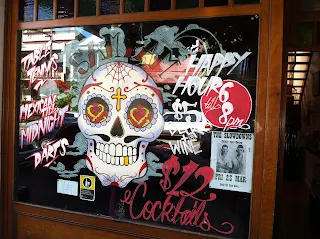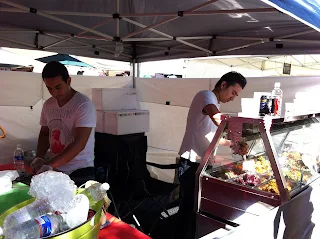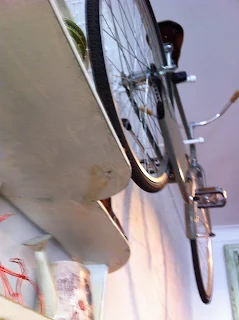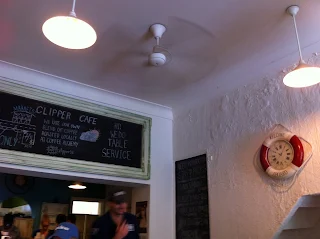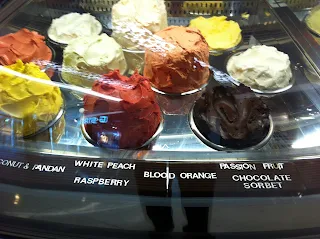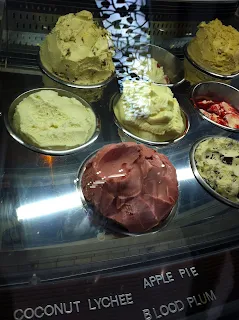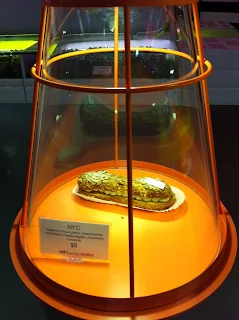Sambal Kampung, or chili and shrimp condiment from the village, is run by a Chinese family previously from Sarawak, the portion of northern Borneo once ruled by White Rajahs (the Brookes), home land to various tribes and home of peppercorn plantations. I had arrived there, a small unassuming cafe like shop, on a suggestion from a Sydney family and with a hunger to try Melbourne's Malaysian food reputation. The thousands of students from Malaysia who had trudged through the grid-like streets of Melbourne since the fifties have indelibly left behind a culinary trail of street food, delicacies from the four main racial groups that reside in Malaysia and various styles of unique cooking traditions that may no longer exist in today's Malaysia.
The first thing I realised was that the roti prata they dished up was bigger in size and asked for a bargain price when compared with Sydney. The accompanying curry was even more wholesome than at Mamaks Chinatown Sydney CBD. Wow. The ambiance was informal, the customers were mostly ex-Malaysians and the food tasted a bit different to this ex-Penangite. The tables and chairs were brown, why all this jungle brown in most Malaysian outlets in Australia? However, the teh tarik (milky latte with a cinnamon bark twist) was authentic. On the other hand, the choices of desserts and drinks variety ala Malaysia was limited. Prices at the Sambal Kampung asked are reasonable, good for an office gathering or just to have a practical dinner after a long day at work in the CBD.
I gradually realised I was not the only one indulging in the comfort foods of my childhood. There were several students who felt at home, taking their bowl of curry laksa or plate of char koay teow, and tourists, who were not fully recovered from their amazement at the availability of such Malaysian food. There were also rarities like fried Hakka pork (Kiu Nyuk), Hakka being the "guest' wandering tribe in China driven to settle mostly in southern Chinese mainland provinces by historical events before many Hakkas formed part of the Chinese emigration to Thailand, Singapore, Malaysia and Indonesia from the 18th century onwards. These Hakkas then created the now well known Hakka Chicken rice while settled in south-east Asia (just like "chop suey" was dished up in California and does not exist in China).
There is another Sambal Kampung outlet in nearby Edgewater Boulevarde in Melbourne's Maribyrnong and Wellington Parade in East Melbourne.
Taste: Worthwhile for selected dishes
Location: Chinatown vibes
People Engagement: Helpful and with no fuss
Service: Quick and friendly
Best Time to Visit: 2pm to 5pm
My Fav Dish Experienced: Roti prata with wholesome chicken curry
Would I Return? : Maybe, to try the sambal prawns, satay, rendang and the lobak rolls!






